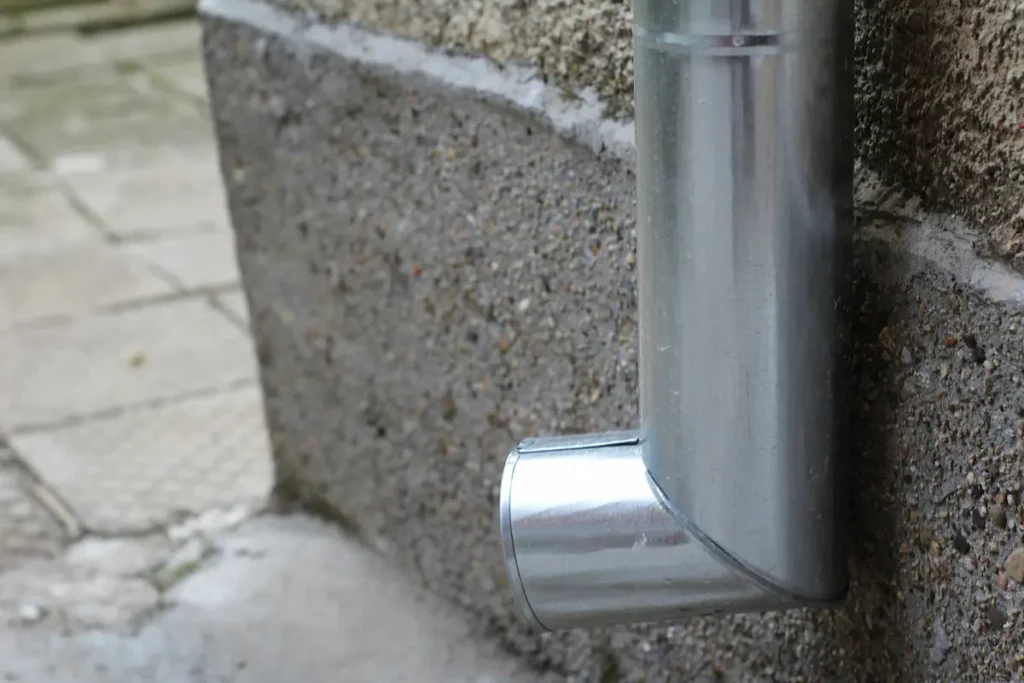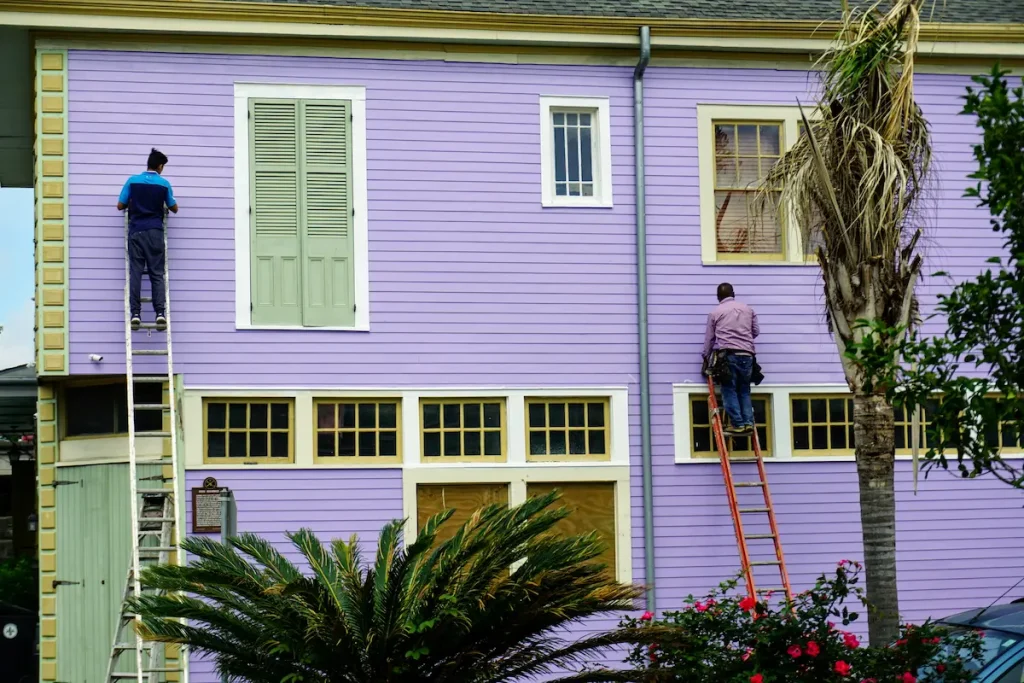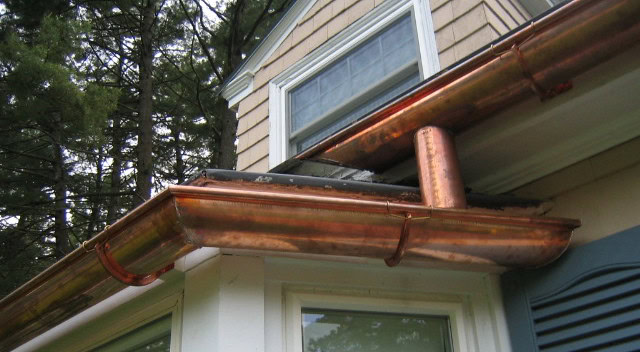Purpose
A gutter is an essential part of any building. They work by guiding rainwater away from your roof, walls, windows and foundation. This helps to reduce any possibility of blockages, which could lead to very expensive repair costs. For this reason, we recommend that you clean your gutters regularly. Doing this also helps reduce leaks, vermin infestation, roof collapse and damage to the building’s exterior, which can also lead to expensive repair costs.
Types of Gutters (Based on Building Types)
When selecting the correct gutter for your building/property, there are many variables to discuss such as local weather, aesthetics, budget and the material used. Below is a brief outline of the most favored types of gutters available in the UK.
PVC or Plastic Guttering
This is a popular choice for many homeowners because it is very cheap and simple to install. However, this method of guttering is not durable and will require more repairs and maintenance over time. Additionally, PVC gutters can be easily damaged by harsh weather conditions such as UV rays or hard frost.
Cast Iron Guttering
This is a very traditional and durable option. When properly maintained and installed, this can last for decades. One drawback, however, is that it is very expensive, more than double the price of PVC. However, what you spend on the installation and purchase of this option, you save on repairs and maintenance.

Aluminium Guttering
Aluminium guttering is also popular due to its low cost and simple installation. As well as being lightweight, it is also available in many different colours. However, like PVC guttering, this option is not durable and will require more repairs and maintenance over time.
Galvanised Steel Gutters
This is a great choice of guttering for both commercial and residential properties. Galvanised steel gutters are the most durable, modern and cost-effective option. They can withstand thermal expansion and contraction, which helps to ensure its integrity during our ever-changing weather system in the UK.
Additionally, stainless steel guttering is also durable and requires low maintenance. However, it is also much heavier and more expensive compared to the other types of guttering.
Copper Guttering
Like Galvanised steel gutters, Copper guttering is also a traditional option that has been used in the UK for centuries. It is made from a durable metal that has been patinated (to coat the surface of a metal) over time to prevent corrosion. This effectively protects the copper from weathering and acid rain, while also acting as an algaecide against moss and lichen. These are plant growth on buildings which capitalise on any defect to material, making repairs very expensive. The properties of copper guttering make it a fantastic companion for seaside or coastal properties.
Zinc Guttering
Like Copper guttering, Zinc guttering is great looking. It is corrosion resistant and immune to UV rays, which results in a long lasting and durable option. This is also a quite expensive option, and it is less attractive for coastal properties or properties on other bodies of water. This is because it can stain if exposed to air with high salt content.
Another important factor to consider when choosing the right gutter is ensuring you select the right profile for your building/guttering. As for the type of material, you use will determine how well the gutter functions. If you live in an area with lots of trees and there is a likelihood of other debris falling into the gutter, you will need a profile that can handle the leaves and debris. A gutter profile depends on size, shape, material and intended use. Below are a set of examples which may be an option for homeowners:
Half – round Gutters
This is a common option which many people use as it is aesthetically pleasing and less likely to clog. It has a simple curve that makes water run more smoothly, reducing the risk of leaks or pipes potentially getting clogged.
Deep Gutters
This is specifically designed for areas with heavy rainfall. It has a similar design to the half–round gutters, but it has a much deeper channel, which allows more water to flow through it. As such the deep gutter is mostly used on large or steep roofs.
Box (Square) Gutters
These are also known as trough gutters and are a designer’s preferred choice, as they create a consistent grid system and help with some architectural designs. It has a modern, sleek look which is more suited to contemporary style properties. Its three-sided shape gives it a sophisticated finish while allowing more water to flow through it unlike the half – round gutters.
Depending on the installation method, this option can be prone to leakages. Therefore, it is imperative you instruct a competent and vetted contractor to action the works, to maintain proper construction and maintenance.
Ogee Gutters
The name “Ogee” is an acronym for “old gothic”, which refers to the fact that this style gained its popularity during Victorian times. Nonetheless, it is a popular style designed with several curves. They are more decorative than your standard gutter and are often used in homes with a more traditional or Victorian architectural style. It is typically made from PVC or aluminium, whilst it is more expensive than others, it is also more durable and effective at preventing water damage. So, you don’t sacrifice the integrity of the gutters whilst searching for a nice design for your home.
Most common types used in residential buildings
The most common types of guttering systems depend entirely on the local weather, budget, aesthetics and longevity.
Local Weather
The most popular choice of gutter in the UK is plastic or PVC guttering as it is readily available, cheaper and lightweight. It also comes in a range of colours. However, due to its durability it is not suited for areas of high wind or rainfall. Alternatively, cast iron gutters will last for decades and can withstand harsh weather conditions whereas PVC is more likely to crack.
Material Used
The lifespan of each material differs and can affect the appearance of your roof. Aluminium gutters can last a few decades, whereas the heavier iron gutters are more durable but need to be repainted every few years. A good option is the steel gutter, which is heavy duty, however, will need a competent contractor to action the installation. Implementing steel gutters correctly ensure they last if they are supposed to, one must verify the steel is treated with protective coating. If not, it will rust quickly.
Size of Gutters
Living an area with a lot of rainfall like the North of England or the Scottish Highlands will require an appropriate gutter to handle the weather. The size and positional placement of the roof will be important to consider. It is important to have a gutter system that is big enough to handle the volume of water without overflowing or leaking into other areas.
Cost of Gutters
Installation of a guttering system can be very expensive, however when done properly, it will do its job and keep your property safe from water damage. PVC is a cheap option that is readily available at your local DIY store, however it is cheap and not durable. Using this as a permanent option will likely require you to make regular visits to the DIY store. Although more expensive, metal gutters are practically maintenance free and look more aesthetically pleasing.
Aesthetics
This is also an important element to consider as you may want to choose gutters that match the colour scheme of your property. Neutral colours like silver give the property a modern feel and make it look more up to date. Therefore, aluminium is one of the most popular choices as it doesn’t require any additional paint or protection and the joints between the gutter and lengths are seamless, making maintenance simple. While cast iron will last longer than aluminium, it is heavier and requires more care, it is also mainly used for heritage properties. A heritage property means an old building constructed prior to 1950 and having heritage value. Moreover, steel is a fantastic option as it is eco-friendly and can be painted to suit your property.
Shape and Design
The two most common types of gutters are the half – round profile and the box gutters. The installation process varies depending on the kind of metal gutter used, but they can be mostly installed by a competent DIYer. It is important to select the gutter that is most suited to your needs. For example, aluminium gutters are lightweight and corrosion resistant, whereas cast iron gutters are durable and rust resistant, but corrode over time due to their high metal content. However, steel gutters have a robust construction and durability, making them a popular choice among homeowners.
Colour
Your gutter colour is another factor to consider as you will want your roofing to match. You may also want to make sure they are compatible with the surrounding environment, so they don’t look out of place. We would recommend finding a gutter with neutral tones or colours that match the colour of the house.
Maintenance and Installation.
Guttering can be long – term when done properly. It is important to maintain and install your gutters correctly to make certain of their longevity and protection from leaks.
We advise against using “gutter brushes”. This is as they can occasionally cause more damage as it can add to the overall weight of the gutter and can cause more blockages when debris falls into it.

Most common issues
Gutter maintenance issues that may arise
- Blockages: this is where leaves, twigs and debris clog gutters, preventing water from draining and flowing freely.
- Signs of wear and tear: Cracks, holes, and rust can compromise your gutter’s ability to direct water away from the building.
- Improper alignment: when gutters are not installed properly, they may begin to sag and pull away from the roof. This can affect their functionality and lead to water damage.
- Downspout efficiency: It is also important to make sure downspouts are diverting water away from the foundation of the property effectively.
Signs to look out for
- Watermarks under the gutters
- Peeling paint or corroded wood on adjacent surfaces
- Pools of water or eroded soil around the foundation.
- Slit or debris deposits indicating overflow.
Maintenance
For minor issues such as small holes or loose gutters it is best to attend to it immediately to prevent a potentially bigger repair. It is best to apply gutter sealant to small holes or cracks as a temporary fix until repairs can be done. Where major works are concerned it is best to call a competent and fully vetted contractor.

